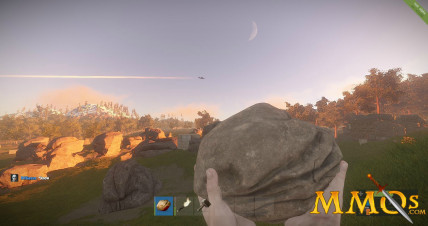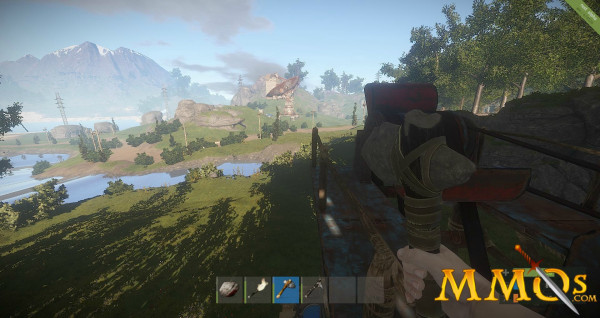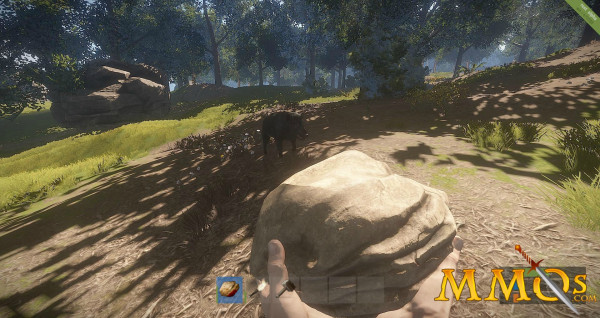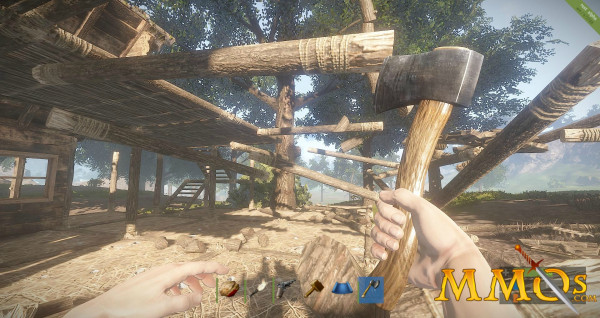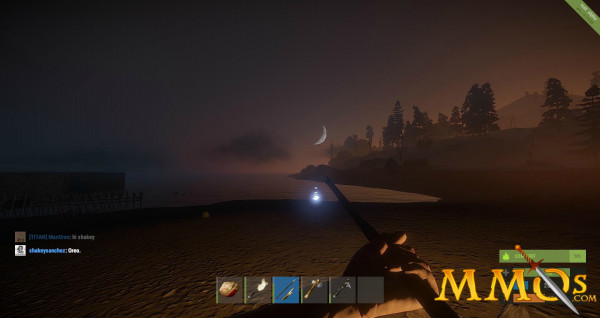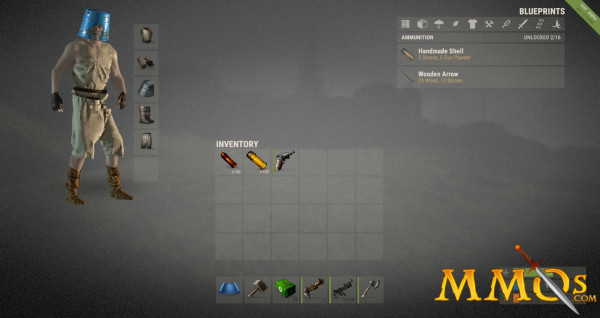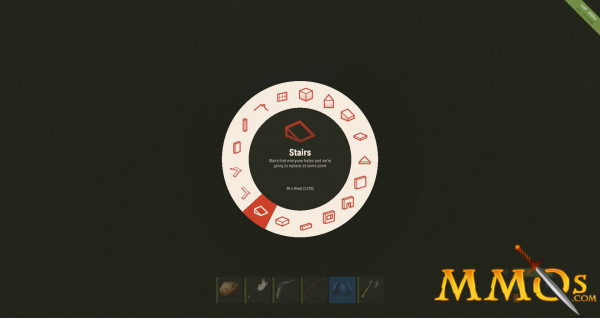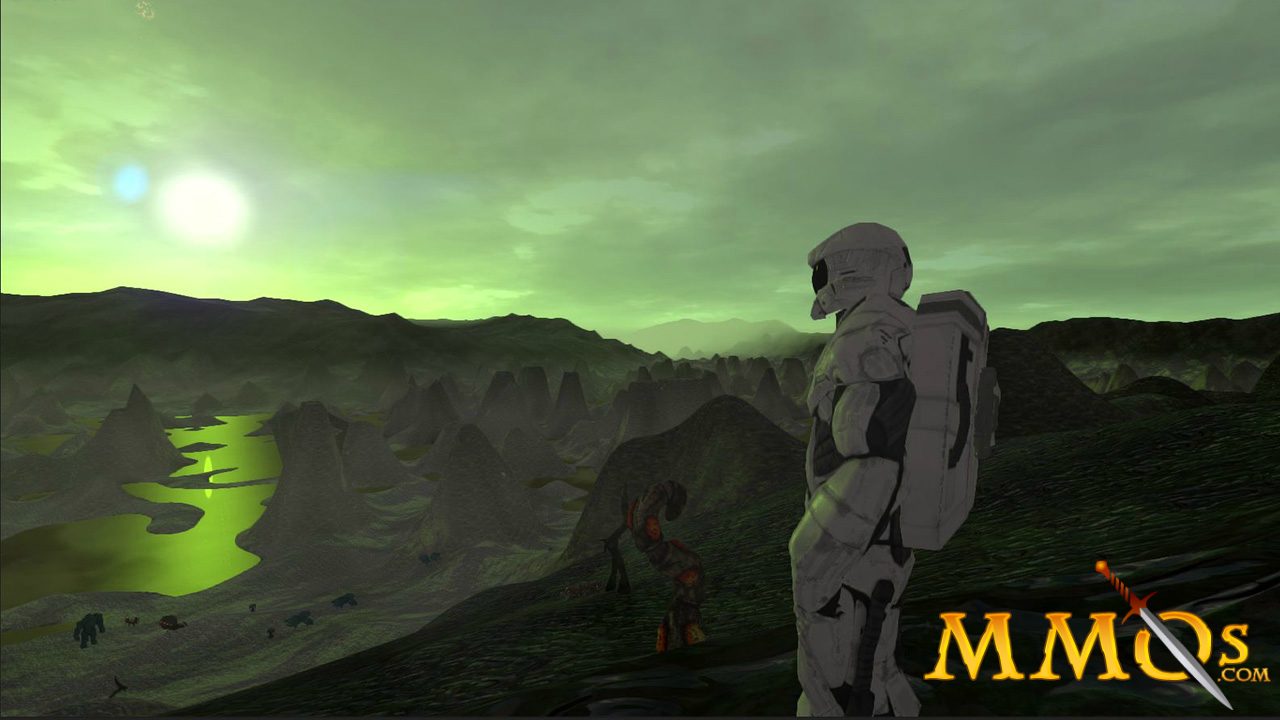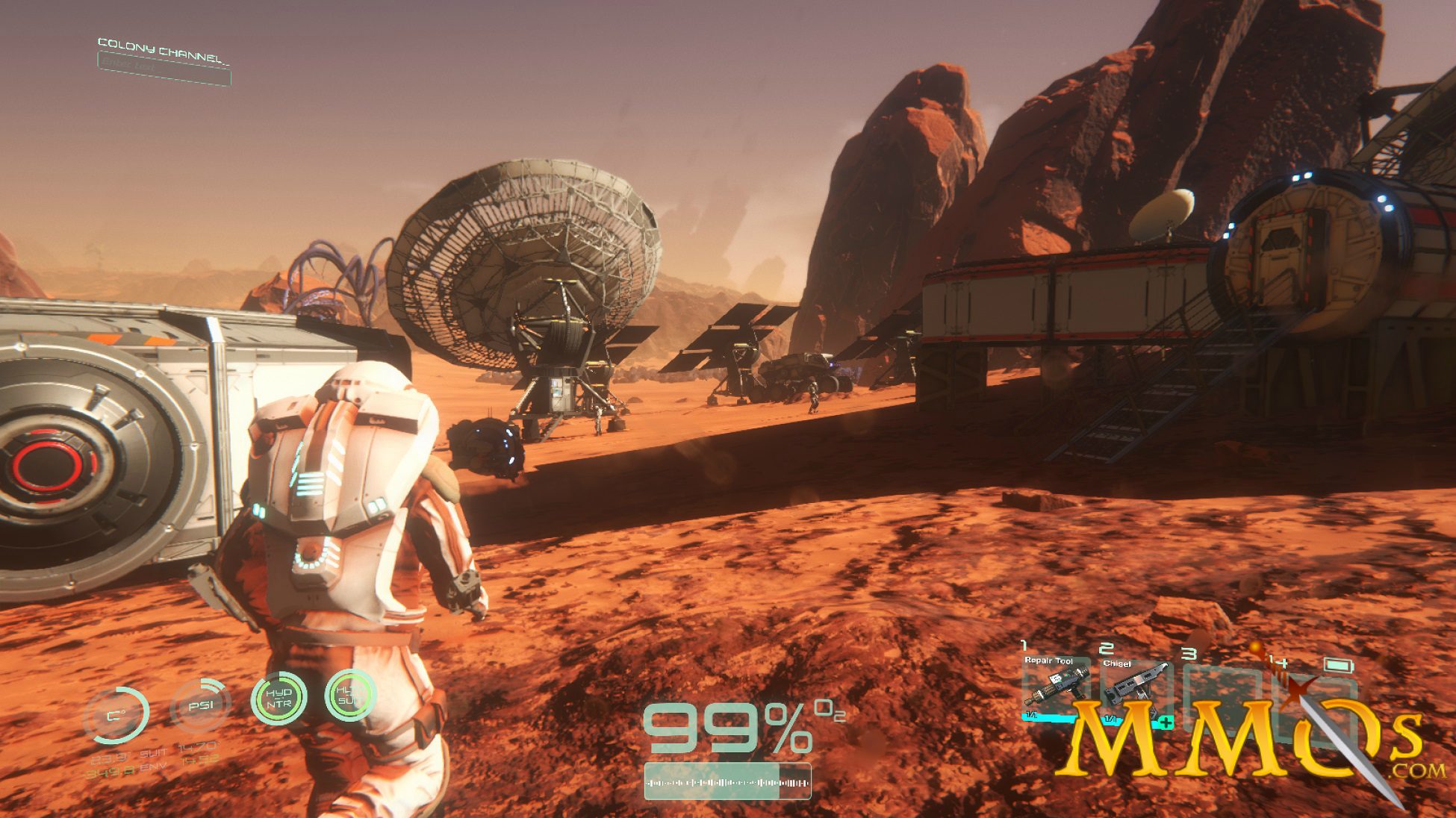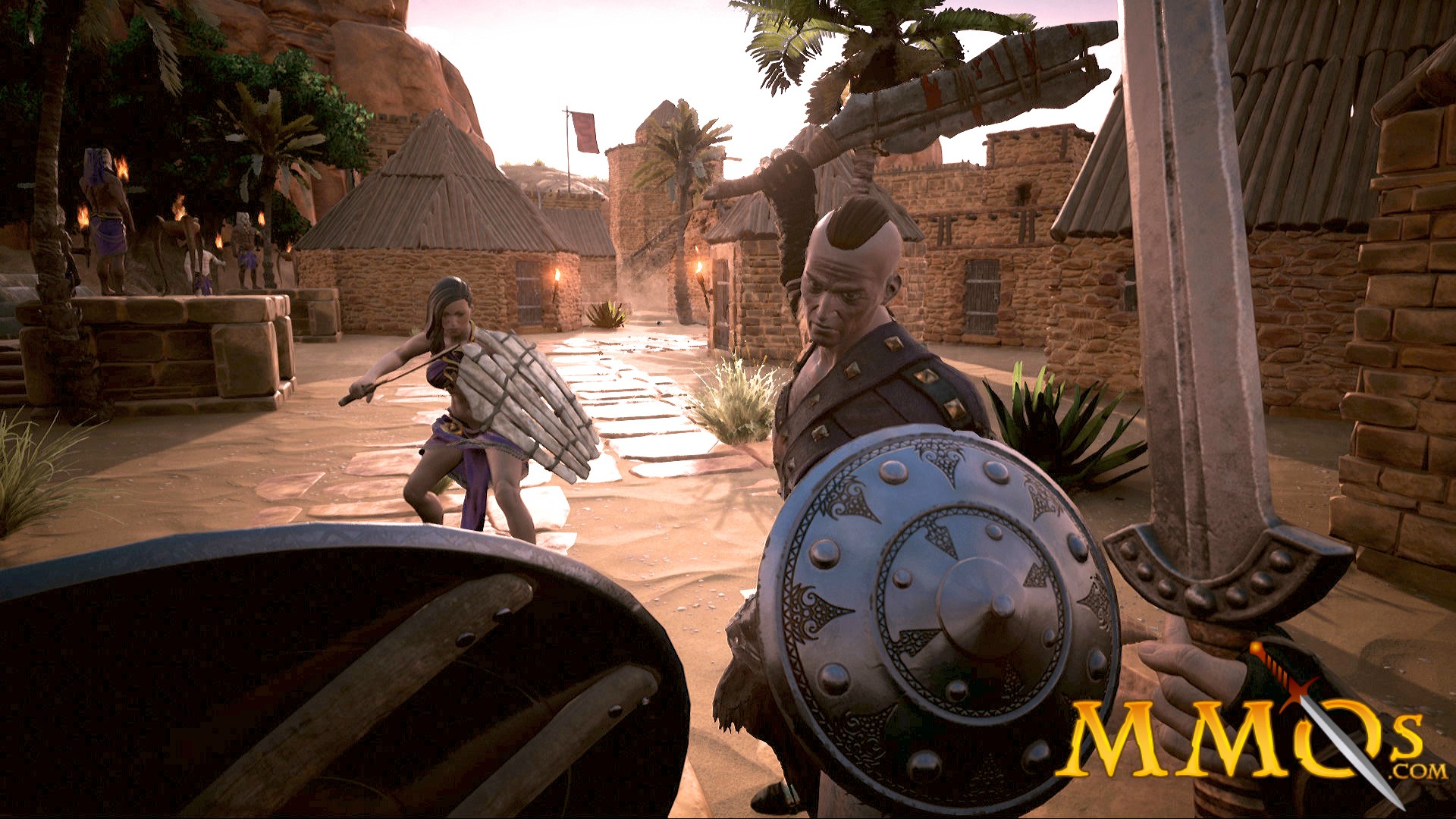Rust
In Rust players must survive on a procedurally generated map by collecting resources, hunting wildlife, and crafting tools. But you’re not alone, other players are also enduring the wilderness. Survive by building a shelter and arming yourself with weapons in an unforgivable environment.
| Publisher: Facepunch Studios Playerbase: High Type: B2P Survival Game Release Date: December 11, 2013 Pros: +Intricate building tools. +Procedurally generated maps. +Extensive crafting system. +Regular updates. Cons: -No tutorial makes learning systems difficult. -Poor optimization causes crashes. -Time consuming to play effectively. |
Rust Overview
Rust is an action survival game developed by Facepunch Studios. Stranded naked and alone, players must scavenge an island in search of food and resources. Every server features a procedurally generated map, with multiple environments to explore, from snow-capped mountains to densely wooded forests. Collect wood to forge a spear and hunt boars for meat and cloth. Create an extensive number of items, from hunting bows to padded locks, to arm yourself and secure your goods. Protect yourself from the elements by constructing a home, using a robust building utility that makes almost any design possible. Watch out for other players, who can be as friendly as they are deceiving. Only a few shots from a Eoka Pistol or a few pokes from a spear are needed to render your naked body useless. Arm yourself with weapons and gear to raid player fortresses, in pursuit of loot or an epic firefight.
Rust Key Features:
- Robust building utility - using a simple tool players can construct enormous forts or intricate designs with ease.
- Realistic survival - players, animals, and the elements compete to kill you. Survive by being cautious and relying on strategy over brawn.
- Extensive crafting - from wooden spears and burlap headwraps, to pistols and Thompson machine guns, create a large catalog of items.
- Player raiding - arm yourself with weapons and infiltrate other player bases to steal their loot, or attack them head-on to engage in an epic firefight.
- Procedurally generated maps - no two servers feature the same world with various environments to keep gameplay fresh.
Rust Screenshots
Rust Featured Video
Rust Review
By, Sean Sullivan
I sunk hours into smashing everything from trees to rocks to boars when Rust first came out. I was hooked, going so far as to start my own server because I grew tired of learning new rulesets and dealing with hackers. It lasted for a month or two, a place where my friends and I built prodigious wooden structures and raided each other. Eventually a friend and I server hopped, collecting guns and spraying down anyone wearing a piece of Kevlar. Rust was a blast. But since launch, it’s undergone a huge upgrade—practically reprogrammed from the ground-up on Unity 5, with major overhauls to the UI, weapons, and environments, and complete with procedurally generated worlds. So, after more than year I’ve reinstalled Rust to see just how far the early access title has developed.
Starting Off
Scanning the server list I found a low ping, Reddit-sponsored server with 34 players—seemed like a safe bet. Dropped in an unfamiliar world, I was naked and alone (familiar enough). Spawning on a beach, I looked into the distance and noticed the curvature of the island, snaking around for what seemed at least a mile and ending with snowy mountains. To my left, a half-doughnut rock structure, perfect for tourist photos, and to my right a player’s ocean-view bungalow. It was Rust alright, but I wasn’t used to this world.
So I did what I always do when I started playing Rust, I ran up to a tree and hammered away with my potato shaped rock, collecting wood. Chipping away at the bark was going well until a player ran up to me, genitals flapping in the wind, and asked me to murder him (probably looking for a respawn). I happily obliged and went back to gathering resources. Yup, Rust might have upgraded its wardrobe but deep down it’s the same ridiculous game. Settling down, I made a fire to cook my newly acquired human meat, seeing as how I was starving.
Stranded Engineers
Unfulfilled by human meat, I needed to hunt, to collect cloth to make a bow and some pants. If I could just find a deer and kill it I could chip away at its corpse with my rock, instantly collecting cloth. Collecting 300 wood from an indefatigable oak I set about crafting a wooden spear, a new weapon since I last played. While crafting an item you can go about your normal routine. So I decided to try and chase a boar with my rock drawn, but the pig was much faster than my hairless legs.
Rust now has a huge inventory of items to craft, and the majority of them are available from the very start of the game. But you’ll need the resources to create them, and for a while you’ll only have access to wood, until you come across a stone. Padlocks, water catchers, and guns are all stored in your fingertips. You’ve woken up naked, afraid, and alone but you’ve got a Masters in Engineering; Rust might as well be renamed “Engineer Royale.” It beats having to collect blueprints for every possible combination of materials. Although you will need to smash barrels and explore Radtowns if you want to craft higher-tier weapons, such as the Bolt Action and Thompson submachinegun.
Aesthetics
The graphics have been improved drastically, showing off the potential of Unity 5. As I collected resources the sun began to set to chirping birds, creating a twilight effect that shrouded the world in darkness. It’s a beautiful transition, as the stars poke through the veil of the night sky and wolves howl in the distance. I lit my torch to see, and the fire effect is just as gorgeous, billowing forth in an angry dance, as smoke trails off in puffs like a hookah smoker’s Thursday night. The light from the flame actually makes it difficult to see as you run, taking center stage of your field of view, and burning your eyes.
Rust is no longer a few fields with toothpick trees and a mountain separating Radtowns. Facepunch has introduced rolling plains, and frigid landscapes with eternally snowcapped peaks. Marshy inlets give way to gentle rivers, dumping out into a tropical azure ocean. Various fauna decorate the landscape along with jutting rock formations. And procedurally generated worlds means each server hop offers a fairly fresh environment. It’s a well polished presentation, one that begs to be explored. It's not without its issues, but with frequent development updates from Facepunch I imagine the vast majority will be fleshed out.
Status Effects
As I traveled through the unfamiliar landscape I inadvertently ended up North, giving me a brutal introduction to the status effect “Too Cold.” Beyond monitoring your health, hunger, and thirst, you must now watch various environmental effects such as “Wet” and “Radiation.” Stay too cold for too long and your health begins to drop. Even though my bodily extremities had retreated into another dimension, the arctic gusts were clawing at my character. Quickly making a fire I staved off death, and learned that fire can increase your health while giving you a “Comfort” buff. Refreshed I ventured off into the unknown, hoping to see palm trees soon.
Community Combat
Upon my travels I came across a friendly stranger. He held down his mic and greeted me with the song of his people, a beautiful tale of love and tragedy, before proceeding to try and smash my cranium with his rock. “[Rust] never changes.” Luckily I had a spear, and I poked the sneaky attacker until his body went spastic ragdoll. A satisfying kill. Just like any open world survival game you have your noble, altruistic players and your scheister, murderers. Every survival game follows the same paradigm: shoot first, then shoot again. It’s tough to trust the community. Luckily, I didn’t see any players running around the map, decked out in Kevlar and wielding M4’s, slaughtering anyone who crossed them.
Combat hasn’t changed much. Life and death are decided in mere moments as you hurtle a spear towards another player's forehead, or line up your iron sights with the Thompson. But the main draw to Rust is its raiding—infiltrating another players base, slaughtering them in their sleep, or if they’re awake engaging in a gunfight, and stealing all of their precious loot. Raiding has become more accessible since the early days of the game. Ladders let you scale the side of a building and plant C4 outside the main stash room, if you know where it's located. Ladders have become such a nuisance, being readily available from the start of the game, that many Community servers limit their use. But it makes raiding more interesting, and prevents any one group of players from dominating a server with ease, as they are just as open to attack. Your base will have to be built tactically to ward off looters.
Building
Building a base has been overhauled to the extreme, and Rust may have one of the best building tools in any open world survival game. Rather than crafting individual pieces, you first craft a Building Plan—a blueprint. Selecting the Building Plan, and holding right-click brings up a crafting wheel, with every possible element that can be crafted in one place. Selecting Foundation and placing it down eats up you wood resources automatically. It’s a serious upgrade from crafting each individual piece of a building and combining them like it’s Lego Worlds. Using the Hammer you highlight a piece and hold right-click to solidify the object. So, until I walk up to my foundation with a hammer and hold right click to upgrade it to wood, it can easily be destroyed with a few swings, or a shot from the revolver. It alleviates accidental placements. And the introduction of physics prevents non-intuitive building placements as well. Knock out a support pillar holding up a central placement and your second floor collapses into a heap of logs.
Final Verdict - Great
Rust is a fantastic survival game, and it's early access success has prompted countless other developers to compete in the survival arena. It captures the sense of exploration and anxiety of wandering alone, particularly now that procedurally generated maps offer a new experience with each server. PvP is still just as brutal and fast paced, with devious players and noble comrades mixed together so that no one is trustworthy. And the building system offers one of the most versatile experiences, with a simple layout capable of complex designs. For the open world survival fanatic, Rust has to be added to your Steam library.
Rust Videos
Rust Links
Rust Official Site
Rust Steam Store
Rust Wikipedia
Rust Reddit
Rust Wikia [Database/Guides]
Rust Gamepedia [Database/Guides]
Rust System Requirements
Minimum Requirements:
Operating System: Windows XP, Windows Vista, or Windows 7
CPU: Pentium 4 1.8GHz or Athlon XP 1700+
Video Card: GeForce 210 or Radeon X600 Series
RAM: 4 GB
Hard Disk Space: 4 GB
Recommended Requirements:
Operating System: Windows XP, Windows Vista, or Windows 7
CPU: Core 2 Duo E4400 2.0GHz or Athlon 64 X2 Dual Core 4200+
Video Card: GeForce GT 340 or Radeon X1900 GT
RAM: 8 GB
Hard Disk Space: 10 GB
Rust is compatible with Mac OS X and SteamOS + Linux.
Rust Music & Soundtrack
Coming Soon...
Rust Additional Information
Developer(s): Facepunch Studios
Publisher(s): Facepunch Studios
Distributor(s): Valve Corporation (Steam)
Engine: Unity 5
Lead Developer(s): Garry Newman
Other Platform(s): OS X, Linux
Alpha Release Date: December 11, 2013
Alpha Reboot Release Date: June 17 2014
Development History / Background:
Rust is developed by British independent video game company Facepunch Studios. Garry Newman founded the company in March, 2009. Rust began as a DayZ clone, stemming from Facepunch’s frustration with DayZ’s gameplay. And the development company wanted to incorporate Minecraft’s crafting and building aspects into an open world survival game. Upon its release Rust sold over 150,000 copies in two weeks. As of May 24, 2014 more than 1.6 million copies have sold, totaling over $46.5 million. In June 2014, a decision was made to rebuild Rust due to unmanageable code. An experimental branch of the game was released alongside the existing version. On August 29, 2014 the rewritten version of Rust was ported to Unity 5, and replaced the legacy version as the main game on October 1, 2014. Besides Rust, Facepunch rose to fame through Garry’s Mod, now the company’s flagship game. It has also acquired the rights to Before, a survival game developed by Bill Lowe, set in the Pleistocene when Neanderthals survived the harsh wilderness.
